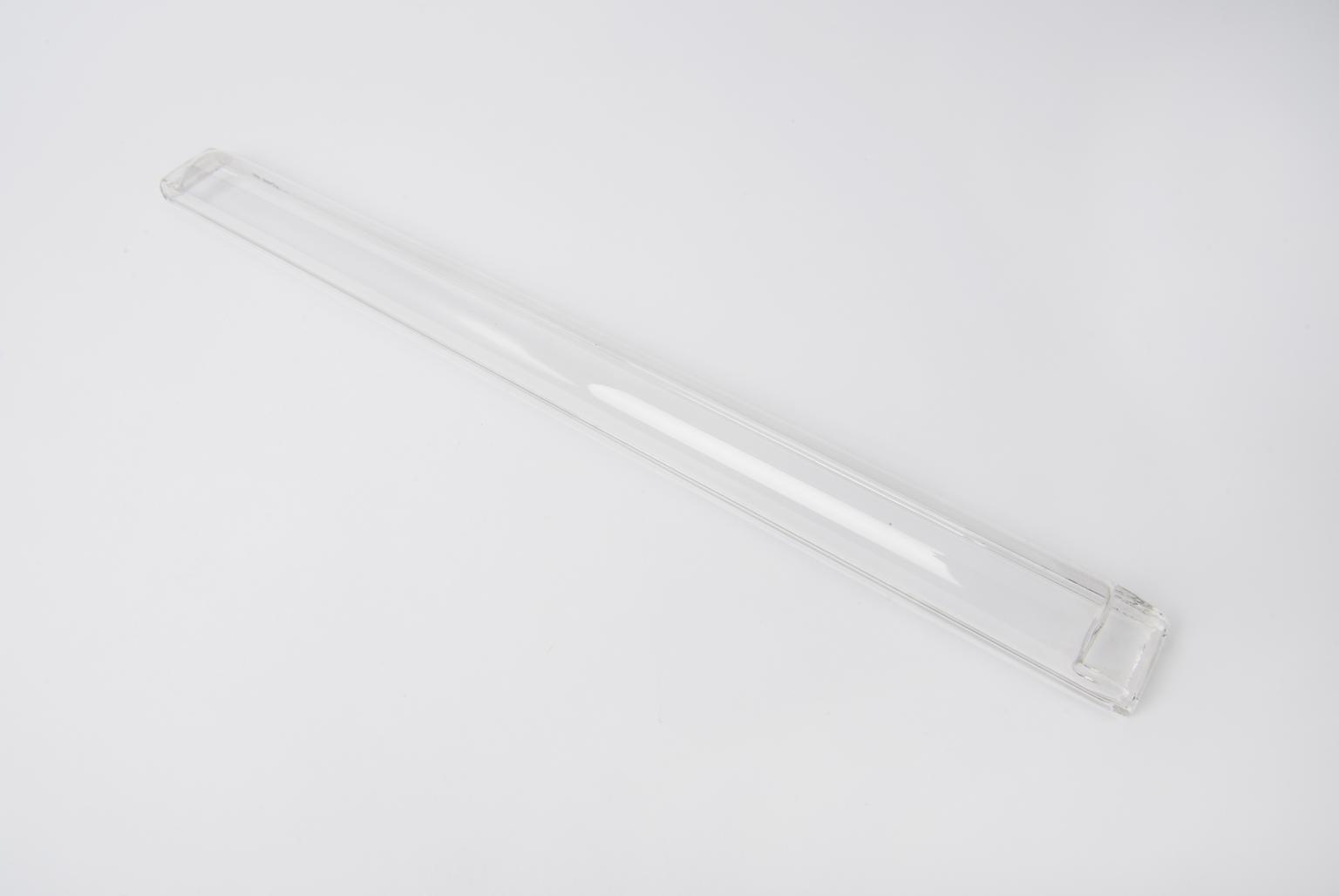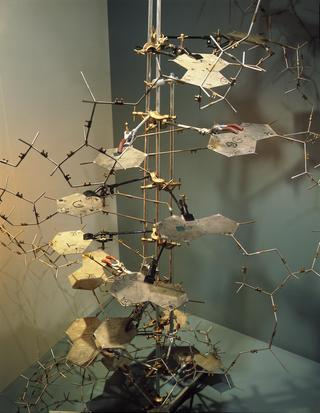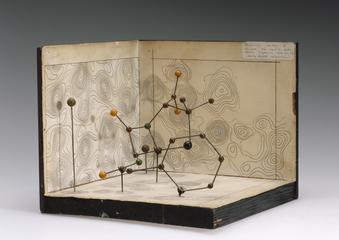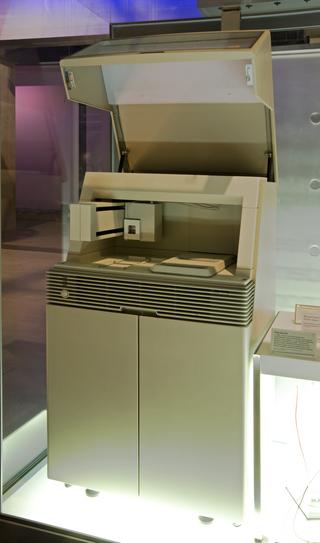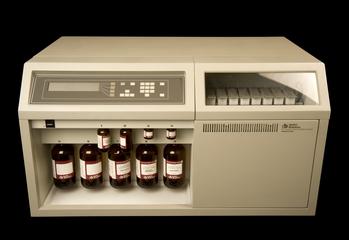Chromatography tank, Sanger’s electrophoresis equipment
Chromatography tank, model 500 chromatank, converted for electrophoresis by Shandon Scientific Limited, England, 1950-1958. Frederick Sanger, a British biochemist, used this equipment to study the structure of insulin by electrophoresis.
More
Frederick Sanger (b. 1918), a British biochemist, used this equipment to study the structure of insulin by electrophoresis in the 1950s. Electrophoresis sepa-rates different proteins in cells using an electrical current. Molecules move at different rates depending on their electrical charge, forming different bands on filter paper. Sanger won the Nobel Prize for Chemistry in 1958 for determining the structure of insulin.
- Measurements:
-
overall: 630 mm x 630 mm x 250 mm, 36 kg
- Materials:
- glass , plastic , steel (metal) and metal (unknown)
- Object Number:
- 1988-206/1








